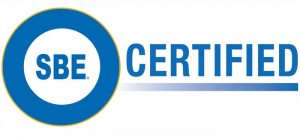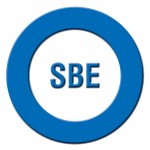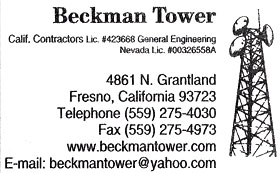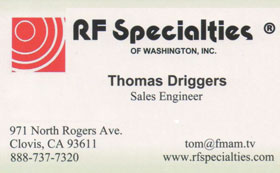By Doug W. Garlinger, CPBE, 8-VSB, CBNT
Two points to consider: If you do not hold SBE Certification, you should get it. If you do hold SBE Certification, you should keep it. If you have a “job” as a broadcast engineer and you are not SBE certified, your reason for not being certified is likely just that: you have a “job”. Thanks to Jim Wulliman, grandfather of the SBE Program of Certification, who had the vision 34 years ago to turn the “job” of broadcast engineer into the “profession” of broadcast engineer. If you consider yourself as one who performs broadcast engineering work professionally, then it only makes sense that your professional abilities should be Certified by the only professional society that understands your trade well enough to test and certify your professional broadcast engineering skills. You may feel that you do not need to prove anything to anyone; but in today’s record unemployment, you are wrong! Each of us needs to prove ourselves every day in order to secure our futures and the futures of those who rely upon us. SBE Certification is a major ingredient in demonstrating your competence to your colleagues, your present employer or a potential employer. Certification could make the decisive difference in a management lay-off decision or in a new hire decision. Even if you plan to retire, it could make the difference in picking up some part-time broadcast engineering employment in your market or in the market where you plan to retire, where no one knows you or the station you previously worked. I too often get calls from suddenly motivated individuals who wish they had become certified sooner when they learn their job might be in jeopardy; or realize their certification is about to expire and they have not been keeping track of their professional credits for re-certification. Let me assure you, that if you have never been certified but have been successfully and competently working a “job” as a Broadcast Engineer, you can pass the test. It is an open book multiple choice 50-question test. There are no trick questions and they are based on your actual experience, and in case you missed it, the test is open book. The exception is that the Senior level tests and the Specialist tests have one additional closed-book essay question.
If you are certified and you are concerned about not having accumulated enough professional credits to recertify, don’t worry, you can take the test again. However, I find it very rare that a certified broadcast engineer has failed to earn enough credits for recertification. Professional credibility is maintained for the SBE Certification Program precisely because the Certification Committee adheres to certain standards for recertification. You need a minimum number of credits from at least four categories. Essentially, the Certification Committee is looking for proof that the person recertifying has continued his or her education in the broadcasting field over the five years of the certification; and the individual has been actively involved in the profession. It is inevitable that if you have been working successfully in broadcast engineering, you must have continued your education in some way and you will meet the recertification credits and category criteria. I suggest tracking your credits through the five years of your Certification rather than trying to remember all of them at the last minute. The SBE has a convenient Excel tracker that you can download at www.sbe.org/documents/ SBE_RecertPoints.xls You must earn 20 credits for most levels of certification, with 25 credits needed for Senior Broadcast Engineer and 30 credits needed for Professional Broadcast Engineer.
All recertification credits are claimed in one of the 10 categories (A-J). I always enjoy quickly running over the list of potential credits when I receive those frantic phone calls. It is very rare to find an active broadcast engineer who does not have enough credits. You can refer to the recertification checklist at http://www.sbe.org/Cert_Maint.php Now count your credits as we review the categories. Category A: You can earn 1 credit per year for just being employed in broadcast engineering. (that’s 5 credits). Another 1 credit per year earned for being employed as a manager or supervisor (that’s another 5 credits). Up to 10 credits can be claimed in Category A. Category B: You earn 1 credit for each CEU (continuing education unit) in broadcasting or an allied field; and 2 credits for teaching a course. SBE University can also be used in this category. Category C: You can earn 1 to 5 credits for delivering a talk or paper at a local SBE meeting and 2 to 10 credits for delivering the talk or paper at a regional or national meeting. Category D: Earn 1 to 5 credits for an article published in a local chapter newsletter; 2 to 10 credits for a technical article in a national broadcast periodical. Category E: You earn 1 credit per year as a member of the SBE, (there’s 5 credits), and another 1 credit per year as a member of other technical societies, such as SMPTE, AES or ARRL. There is a 10-credit maximum. Category F: You earn 2 credits per year as an officer or committee member in local or national SBE or other technical society. (Maximum 10 credits.) Category G: This is the easy one. Earn 0.5 credit for each local SBE or other technical society meeting attended. Earn 1 credit per day for attendance at regional or national meetings, such as the SBE Annual Meeting, regional SBE, NAB, Ennes Workshops and other technical seminars. Check Category G for other credit earning avenues. The number of credits earned in this category is not limited. Category H: 1 credit for each 10 contact hours at a factory school or instation school. This category is often overlooked. It could be an ENG safety or RF safety course. Gary Sgrignoli’s ATSC seminar qualifies as 1 credit in this category. (Maximum 10 credits) Category I: Home study course. The number of credits is determined by the Certification Committee. If you claim credits here, provide sufficient documentation to substantiate your claim. Category J: This is the creative one. It is a credit for other activities and can cover the activity that does not fit neatly into any of the other categories. This determination is made at the discretion of the Certification Committee and can at times supply that pesky fourth category in an application that has a lot of credits in only three categories. Again, provide sufficient documentation to substantiate your claim. I will bet you have a lot more credits than you thought. For those of you still unconvinced about the value of SBE Certification, remember; the only real “job” security is your ability to get your next “job.” Certification helps
Category A: You can earn 1 credit per year for just being employed in broadcast engineering. (that’s 5 credits). Another 1 credit per year earned for being employed as a manager or supervisor (that’s another 5 credits). Up to 10 credits can be claimed in Category A. Category B: You earn 1 credit for each CEU (continuing education unit) in broadcasting or an allied field; and 2 credits for teaching a course. SBE University can also be used in this category. Category C: You can earn 1 to 5 credits for delivering a talk or paper at a local SBE meeting and 2 to 10 credits for delivering the talk or paper at a regional or national meeting. Category D: Earn 1 to 5 credits for an article published in a local chapter newsletter; 2 to 10 credits for a technical article in a national broadcast periodical. Category E: You earn 1 credit per year as a member of the SBE, (there’s 5 credits), and another 1 credit per year as a member of other technical societies, such as SMPTE, AES or ARRL. There is a 10-credit maximum. Category F: You earn 2 credits per year as an officer or committee member in local or national SBE or other technical society. (Maximum 10 credits.) Category G: This is the easy one. Earn 0.5 credit for each local SBE or other technical society meeting attended. Earn 1 credit per day for attendance at regional or national meetings, such as the SBE Annual Meeting, regional SBE, NAB, Ennes Workshops and other technical seminars. Check Category G for other credit earning avenues. The number of credits earned in this category is not limited. Category H: 1 credit for each 10 contact hours at a factory school or instation school. This category is often overlooked. It could be an ENG safety or RF safety course. Gary Sgrignoli’s ATSC seminar qualifies as 1 credit in this category. (Maximum 10 credits) Category I: Home study course. The number of credits is determined by the Certification Committee. If you claim credits here, provide sufficient documentation to substantiate your claim. Category J: This is the creative one. It is a credit for other activities and can cover the activity that does not fit neatly into any of the other categories. This determination is made at the discretion of the Certification Committee and can at times supply that pesky fourth category in an application that has a lot of credits in only three categories. Again, provide sufficient documentation to substantiate your claim. I will bet you have a lot more credits than you thought. For those of you still unconvinced about the value of SBE Certification, remember; the only real “job” security is your ability to get your next “job.” Certification helps


